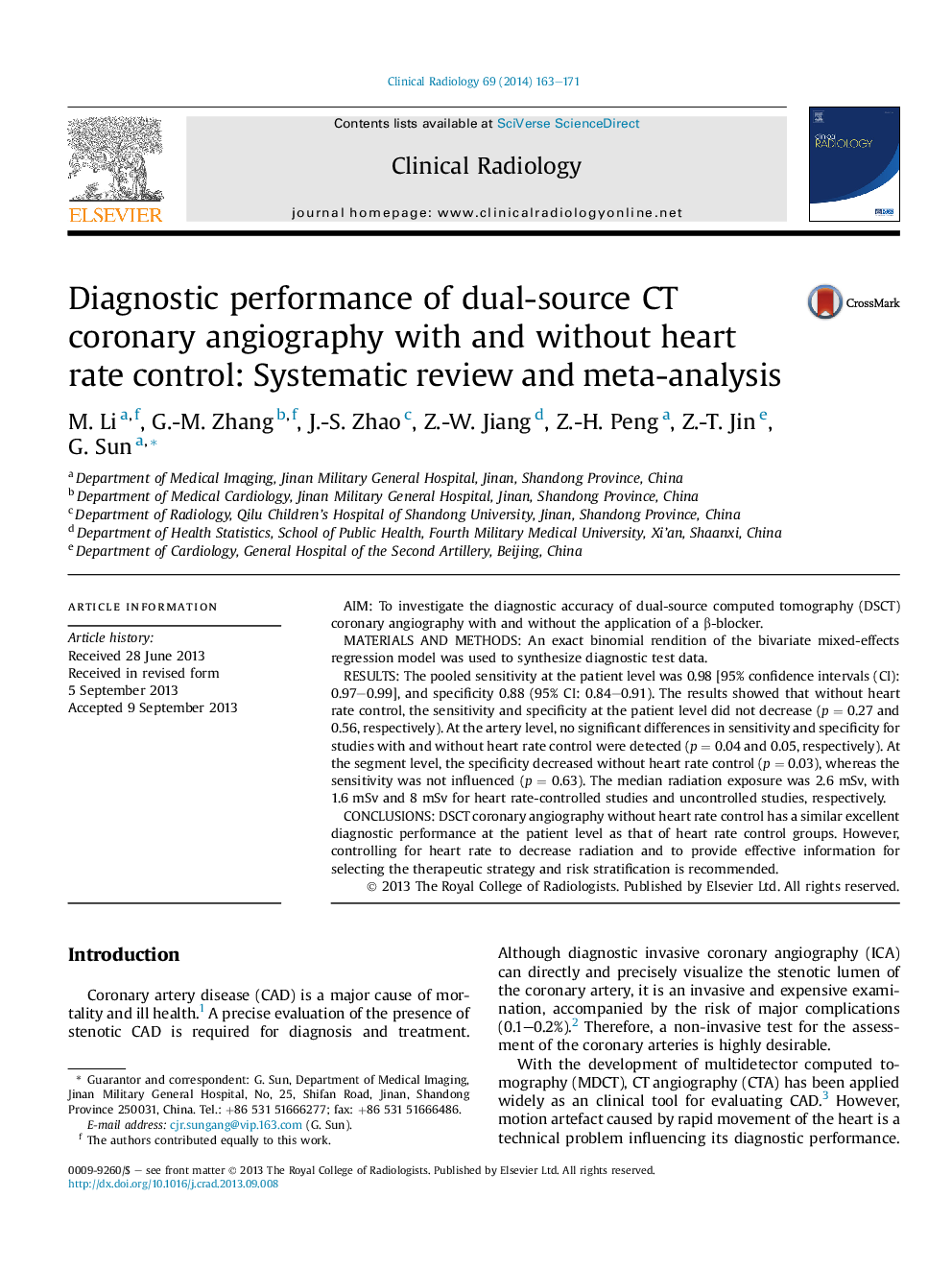| Article ID | Journal | Published Year | Pages | File Type |
|---|---|---|---|---|
| 3981478 | Clinical Radiology | 2014 | 9 Pages |
AimTo investigate the diagnostic accuracy of dual-source computed tomography (DSCT) coronary angiography with and without the application of a β-blocker.Materials and methodsAn exact binomial rendition of the bivariate mixed-effects regression model was used to synthesize diagnostic test data.ResultsThe pooled sensitivity at the patient level was 0.98 [95% confidence intervals (CI): 0.97–0.99], and specificity 0.88 (95% CI: 0.84–0.91). The results showed that without heart rate control, the sensitivity and specificity at the patient level did not decrease (p = 0.27 and 0.56, respectively). At the artery level, no significant differences in sensitivity and specificity for studies with and without heart rate control were detected (p = 0.04 and 0.05, respectively). At the segment level, the specificity decreased without heart rate control (p = 0.03), whereas the sensitivity was not influenced (p = 0.63). The median radiation exposure was 2.6 mSv, with 1.6 mSv and 8 mSv for heart rate-controlled studies and uncontrolled studies, respectively.ConclusionsDSCT coronary angiography without heart rate control has a similar excellent diagnostic performance at the patient level as that of heart rate control groups. However, controlling for heart rate to decrease radiation and to provide effective information for selecting the therapeutic strategy and risk stratification is recommended.
